
5 Questions Every CEO Should Be Asking Their Mobile App UA Lead Post-iOS Privacy Changes
As we move into the new AppTrackingTransparency (ATT) paradigm of mobile marketing, the whole industry will begin to realize exactly how this privacy-friendly phase of user acquisition is unlike anything it’s experienced over the past five years.
The effective deprecation of the IDFA on iOS with the enforcement of ATT in iOS 14.5 disrupts mobile marketing measurement as we know it. LTV models of today will be rendered obsolete and there will be significant challenges related to campaign and channel bid and budget optimization.
Although many UA and analytics professionals are already preparing for this paradigm shift, it’s imperative for the long-term health of app-based businesses that they represent, that they’re challenged to think about the solutions they’re building to adjust to iOS 14.5. If the framework and execution of the problem solving aren’t given a rigorous assessment by the most senior leadership within a business, it’s likely that all stakeholders in the success of the UA function will be shocked by this new mobile marketing paradigm.
To help guide this conversation, we share five questions that senior leadership, particularly CEOs, should be asking their mobile app UA and analytics leads to ensure the business is prepared to tackle the new ATT paradigm.
1. How do you plan to report ROAS from your SKAdNetwork campaigns?
Most advertisers today use a cohort LTV model to measure the performance of their campaigns. However, cohort LTV models are effectively defunct on iOS (post-14.5) as key dimensions to predict LTV are missing, namely source name, campaign name, and campaign ID. With IDFA missing, there’s no way to tie SKAdNetwork installs to campaigns and, therefore, traditional D7 ROAS reporting will be rendered useless.
SKAdNetwork allows for reporting of D0 KPIs but not ConversionValue as it prohibits longer prediction windows such as D7, D30, D180, and D365.
CEOs should be asking their UA/analytics teams:
- How will we measure ROAS?
- How will we predict and report on the long-term performance of our marketing campaigns?
- How will we update the ROAS performance of older cohorts to understand how recently acquired cohorts mature over time?
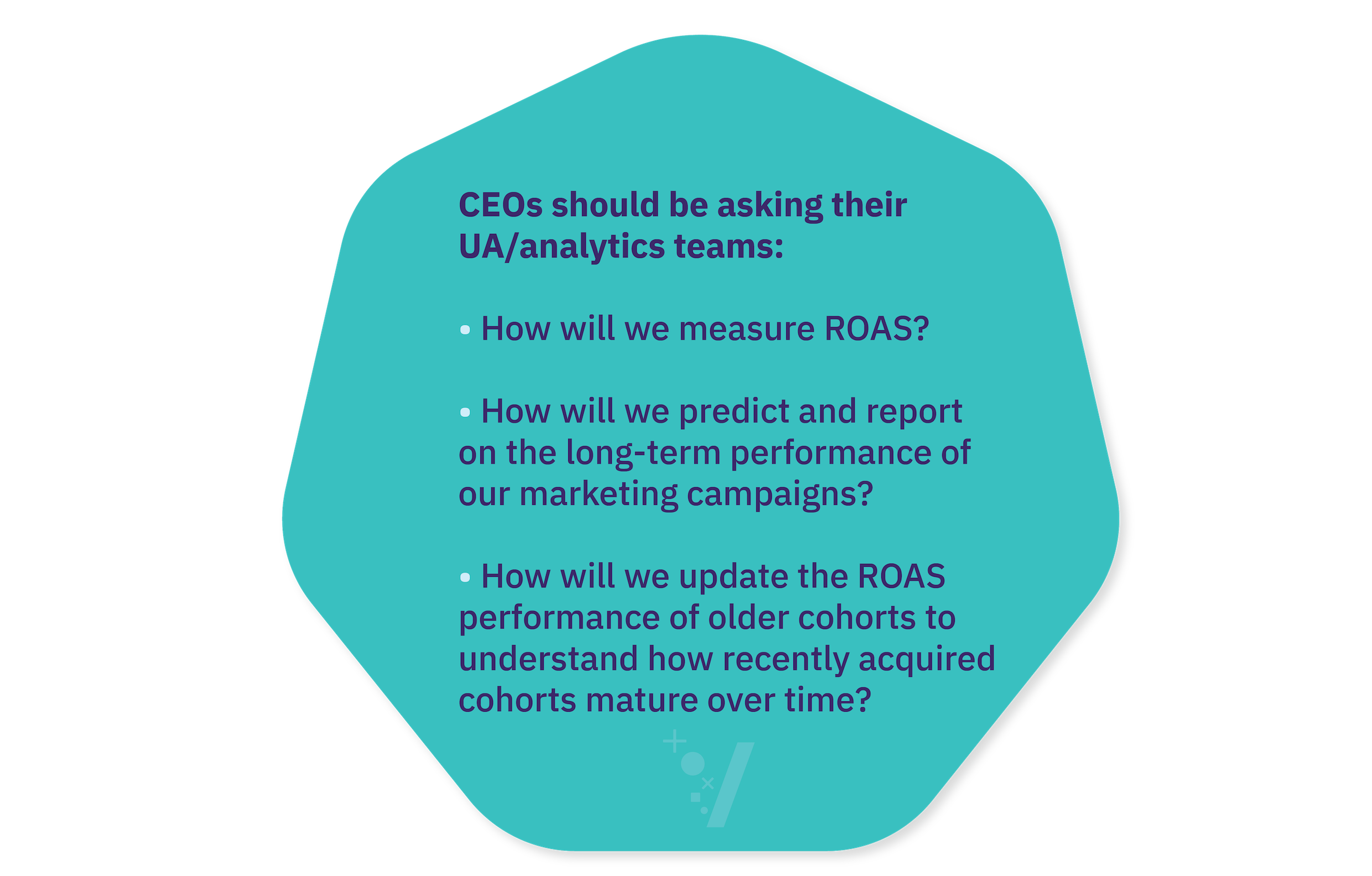
2. What data do you plan to use to measure performance?
Without access to the device IDFA associated with an acquired install, it’s impossible to deterministically measure the downstream performance of SKAdNetwork campaigns. This puts a limitation on reporting of post-install revenue and in-app engagement events. Most advertisers will only leverage SKAdNetwork’s reporting capabilities to measure campaign performance and therefore will be limited to D0 KPIs such as “tutorial finish” or “purchase made”.
CEOs should be asking their UA/analytics teams:
- What additional data, on top of SKAdNetwork data, are we using to measure performance?
- How are we using in-app user data to build statistical models to attribute post-install revenue?
- How will we measure incrementality? How will we understand the value of our organic installs?
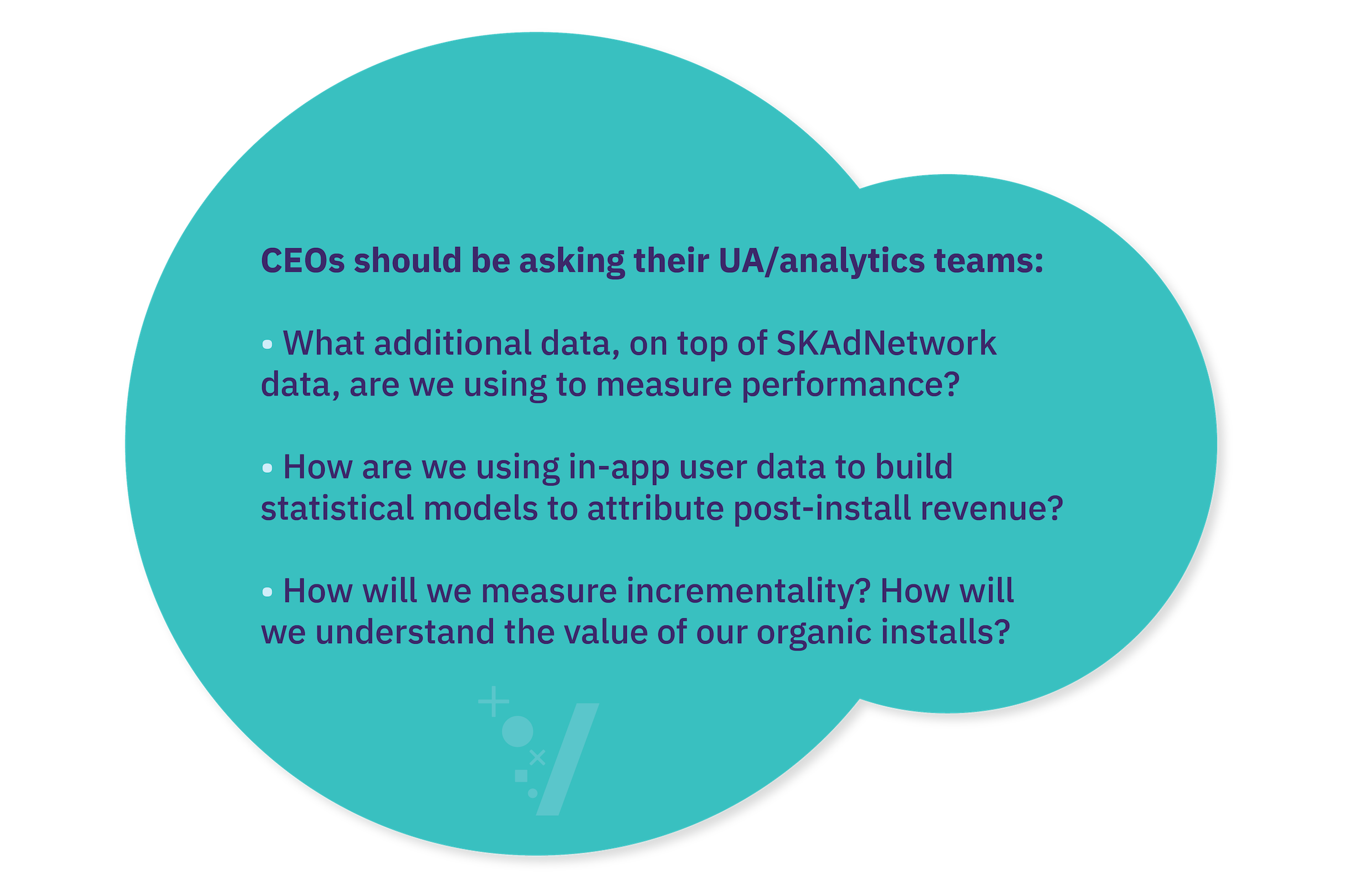
3. How do you plan to use ConversionValue data when it’s partially reported?
Advertisers are quickly learning that the privacy threshold implemented by Apple as part of SKAdNetwork is limiting the amount of data they’re expecting to collect. This means they’re missing a large percentage of both source app ID and ConversionValue data to understand respectively where a given install occurred and to get a rough estimation of the LTV of an acquired user after installing. Some advertisers have reported as high as 80% of ConversionValue data being missing—data they expected to be reported back to their respective MMP.
CEOs should be asking their UA/analytics teams:
- How do we measure the performance of our campaigns when we’re missing this ConversionValue data?
- How do we optimize campaign performance if we don’t have a full accounting of the short-term performance of our campaigns?
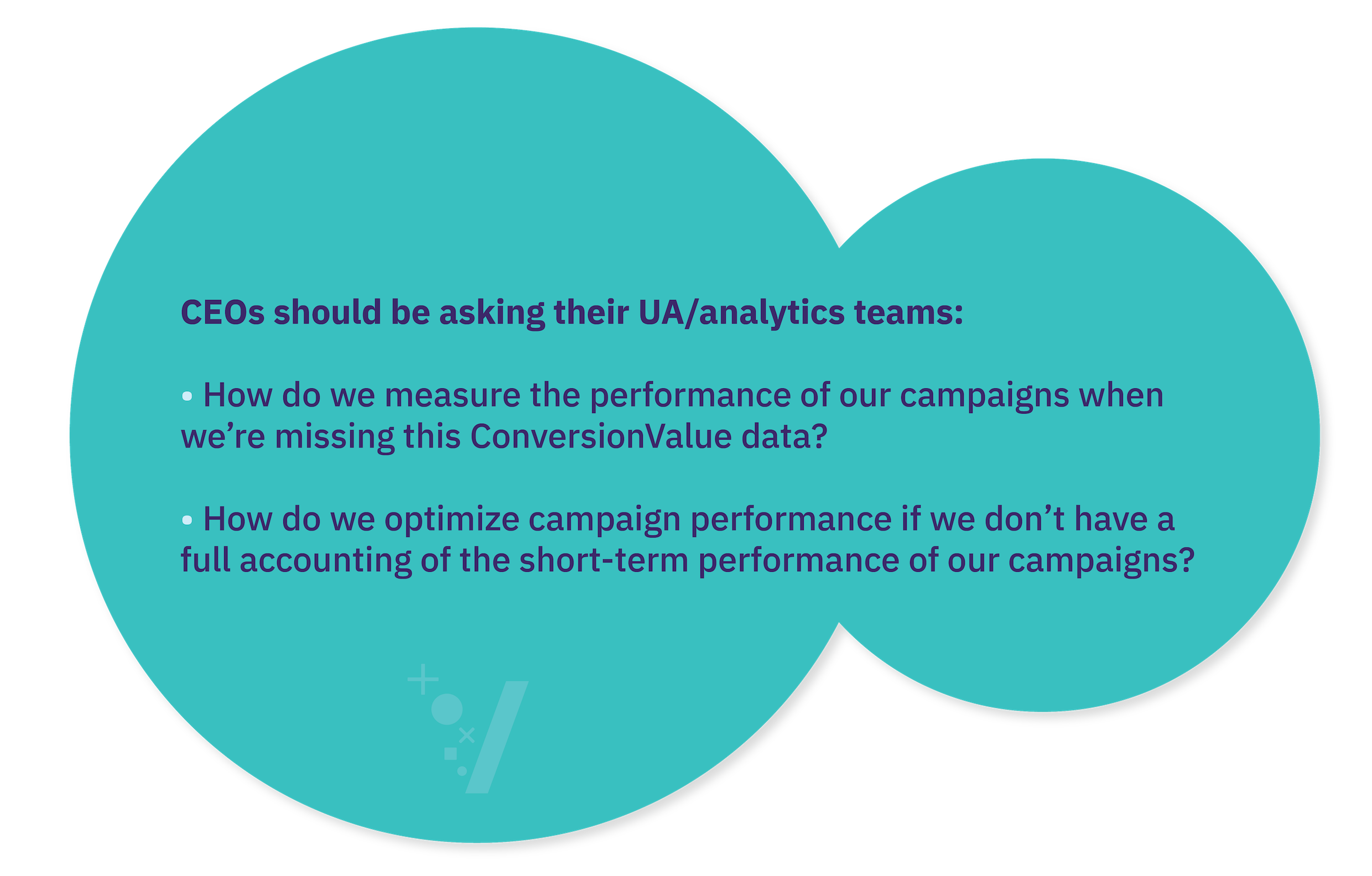
4. How do you plan to use modeled ConversionValue data (i.e. reported ConversionValues that aren’t tracked by SKAdNetwork)?
Google and Facebook have both suggested they’ll be providing advertisers with modeled conversions when the ConversionValue data is missing from SKAdNetwork. There’s no way to verify the modeling and accuracy that these ad platforms are providing to their advertisers. And there may be cases where this modeling actually cannibalizes installs from other ad networks that are also missing ConversionValue data or installs that are actually organic.
CEOs should be asking their UA/analytics teams:
- How do we plan to use modeled ConversionValue data?
- How do we reconcile this modeled data set versus actual data from SKAdNetwork?
- How does missing ConversionValue data affect our budgeting decisions?
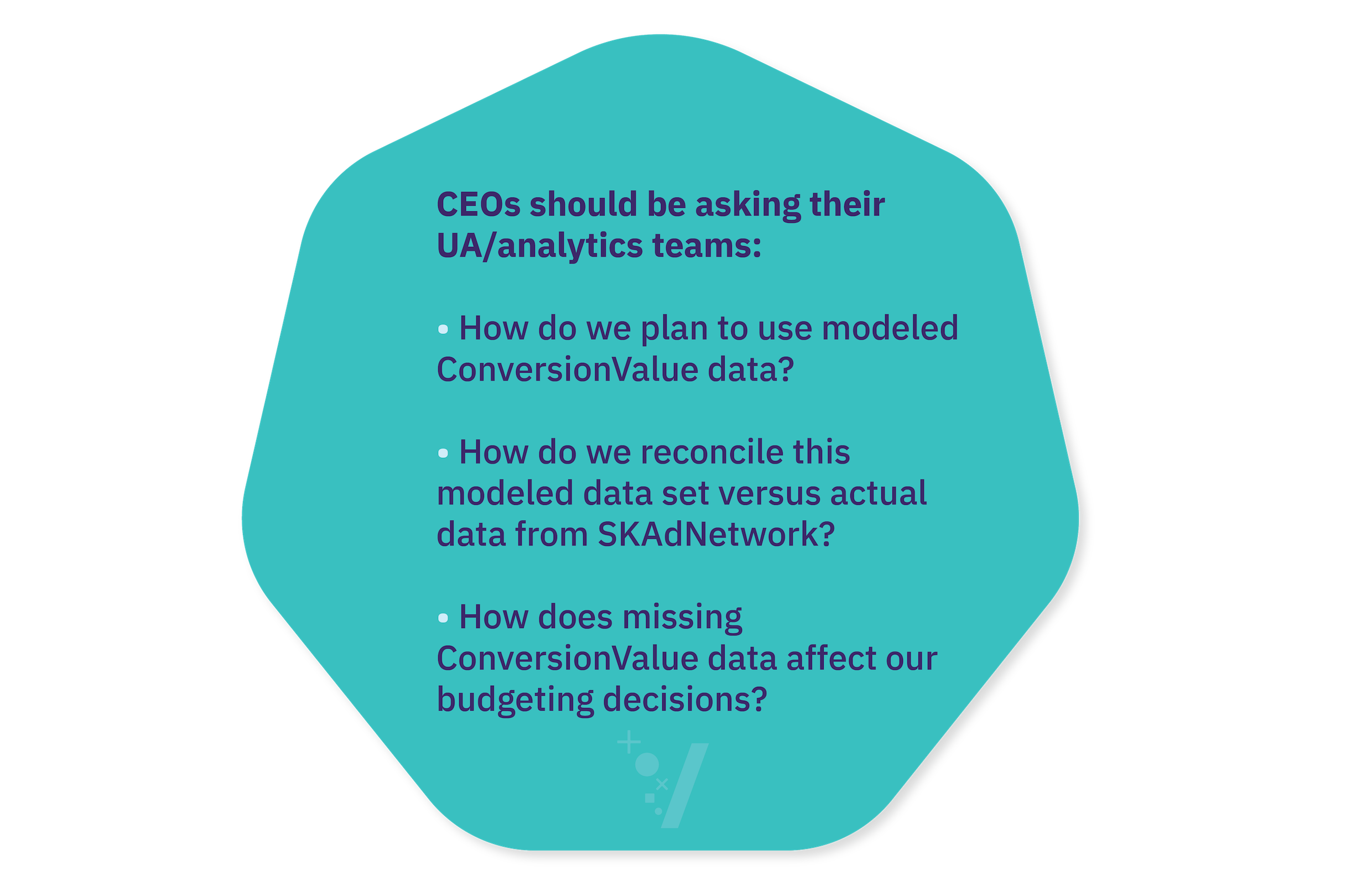
5. How do you plan to optimize budgets/bids on your mobile UA campaigns and channels?
Most UA teams won’t have access to long-term ROAS reporting through SKAdNetwork campaigns and will be limited to partial reporting on D0 KPIs due to SKAdNetwork’s privacy threshold. This will severely limit how UA teams determine budget allocation across campaigns and channels.
CEOs should be asking their UA/analytics teams:
- How are we planning to allocate budgets across SKAdNetwork campaigns?
- What data will we use to determine where we allocate budget?
- How do we decide on channel-level budgets?
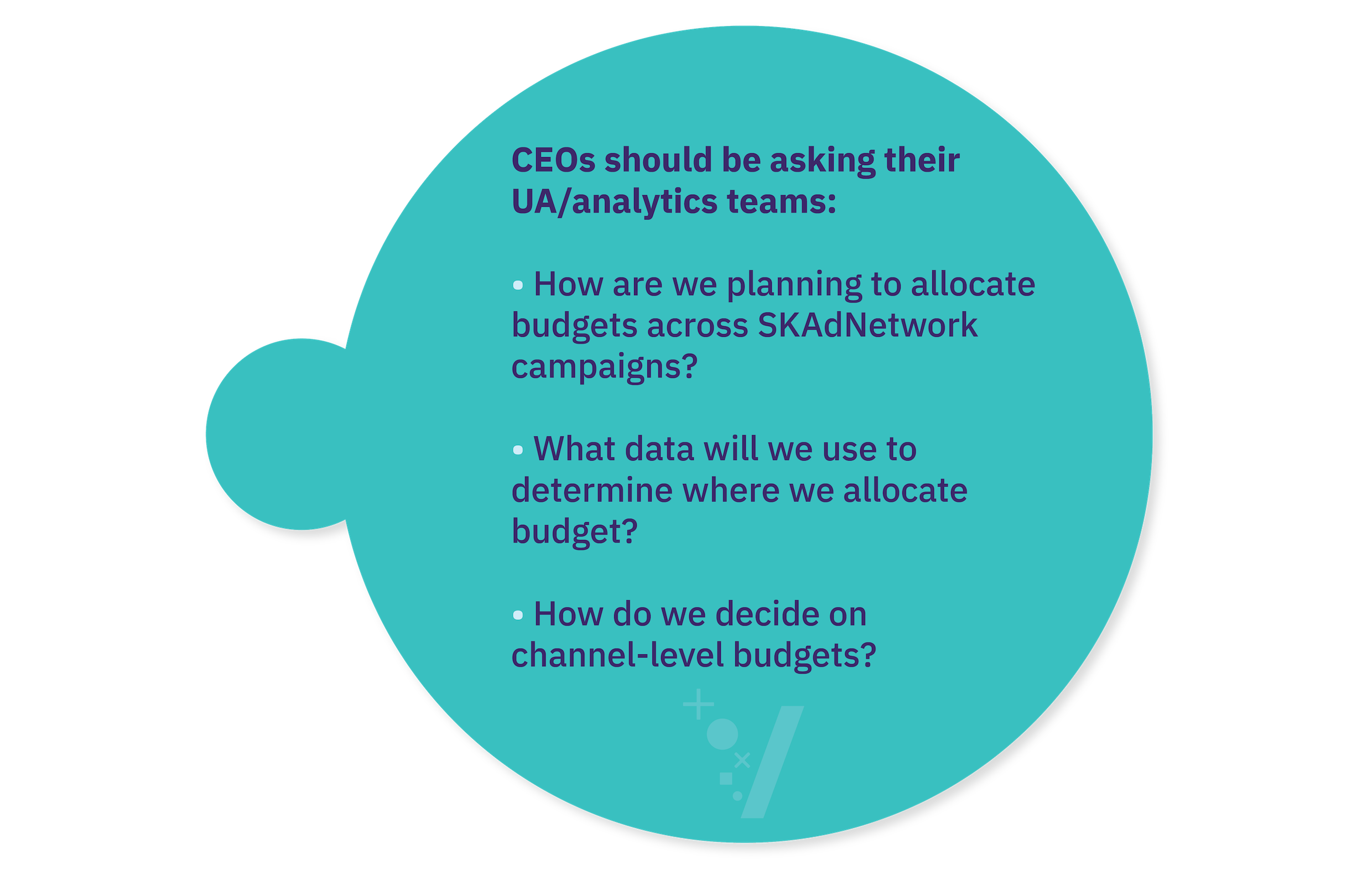
These are hard problems to solve with many outstanding questions. It’s essential as we enter this period of uncertainty for an app-based business reliant on UA for growth, that UA/analytics teams are being held accountable for the decisions they make for the long-term health of the company.
AlgoLift by Vungle is working on the future of UA on iOS and has built a platform that answers all these questions. For more info, please fill out the form below.